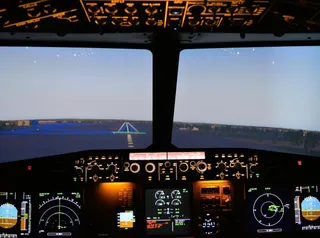Civil Aviation
2 December 2025 Patrick Johnston Veronica Zunic challenges outdated aviation training, urging adaptation to Gen Z’s learning style and tech-driven methods. A compelling Inside Aviation interview from EATS 2025.
21 November 2025
18 November 2025
Search channel
Refine Search
All Civil Aviation News & Articles
Alpha Aviation Academy UAE has acquired approval to conduct English Language Proficiency assessments. 4 February 2021
The Mayo Clinic’s Dr. Henry Ting has been named to the new position of Chief Health Officer for Delta Air Lines. 3 February 2021
The first brand-new Airbus A320ceo Full Flight Simulator is currently being assembled, which will mark the beginning of BAA Training Spain operations. 3 February 2021
Latvian airline airBaltic has established and received certification of its new Maintenance Training Organization. 3 February 2021
LAM - Mozambique Airlines, based in Maputo, Mozambique, Africa has awarded Avsoft International a long-term contract for online pilot training. 2 February 2021
Air China has selected L3Harris Technologies to provide a range of pilot training simulators to support the airline’s strategy for growth. 2 February 2021
AeroTime Hub, together with the aviation job board AviationCV.com, are launching a new initiative that aims to support the global aviation community. 2 February 2021
During the Great Recession a dozen years ago, smaller communities in the US lost aircraft departures at a rate five times greater than losses at larger airports. US Editor Chuck Weirauch outlines the regional airlines status and outlook. 1 February 2021
The World Aviation Training Summit (WATS), the world’s largest gathering of aviation training professionals, will take place on June 15-16, 2021. 1 February 2021
Maldives Airports Company has awarded a contract to Micro Nav to supply a Beginning to End for Simulation and Training tower and radar simulator to the MACL Aviation Institute. 1 February 2021
Flight Training International, a Denver-based training academy, will now rely on Comply365’s cloud-based solutions for a more efficient, reliable digital operation. 1 February 2021
Frontier Airlines and ATP Flight School have formed a Frontier Direct Program, targeting ATP graduates and CFIs for employment as Frontier Airlines First Officers. 28 January 2021
Aviation School of New Zealand, based at Chu Lai Airport, Vietnam, has become the first academy in the country to implement FlightLogger. 28 January 2021
Quantum3D has released the Quantum3D Wildfire Simulation System, a software suite to provide real-time visualization of large-scale wildfires, combined with accurate modeling of fire propagation. 27 January 2021
The second edition of the CAE OneWorld virtual conference and tradeshow will start on February 9, 2021. 27 January 2021
Embry-Riddle Aeronautical University researchers published a paper demonstrating the bias faced by aspiring female and minority commercial pilots. 26 January 2021
Airline market watchers have been predicting that tourism and low-cost carriers will be the initial drivers for the return surge in passenger traffic, and easyJet’s holiday bookings seem to bear that out. 26 January 2021
Robert W. Moorman continues his exploration of the dramatic changes in AMT training methodologies and regulations by talking to Delta Tech Ops. A spokesperson for the company, the MRO division of Delta Air Lines, headquartered at Hartsfield-Jackson International Airport in Atlanta, Georgia, provided these responses to CAT. 25 January 2021
Considered “essential workers,” airline employees are among the first groups to receive the vaccine. However, the disbursement of the vaccines has been erratic. 25 January 2021
The basic requirements to become a licensed aircraft maintenance technician (AMT) haven’t changed much over the years. Until now. Robert W. Moorman explores The basic requirements to become a licensed aircraft maintenance technician (AMT) haven’t changed much over the years. Until now. Robert W. Moorman explores dramatic changes in AMT training methodologies and regulations. 25 January 2021


